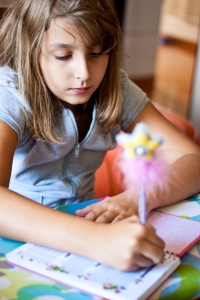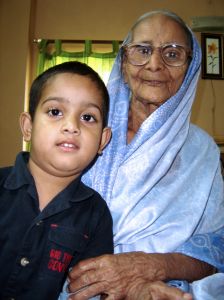By Shoshana Hayman, director of the Life Center/Israel Center for Attachment Parenting, http://lifecenter.org.il
 Ricki was in trouble again with her first-grade substitute teacher, this time for accidentally spilling water on her desk. She missed her regular teacher who was on a four-month leave of absence after giving birth. Ever since the new teacher came, Ricki hated school. She was sure the teacher didn’t like her — for forgetting her homework one day, for not paying attention another day, and now for spilling water on the desk. She returned home each day, filled with foul frustration, which erupted in attacking her younger brother, taunting her older sister, and talking back to her parents.
Ricki was in trouble again with her first-grade substitute teacher, this time for accidentally spilling water on her desk. She missed her regular teacher who was on a four-month leave of absence after giving birth. Ever since the new teacher came, Ricki hated school. She was sure the teacher didn’t like her — for forgetting her homework one day, for not paying attention another day, and now for spilling water on the desk. She returned home each day, filled with foul frustration, which erupted in attacking her younger brother, taunting her older sister, and talking back to her parents.
She counted the days until her real teacher would return to teach the class. She was so excited with anticipation that she prepared a folder from an empty cereal box and decorated it with foil paper and stickers. Then she drew some pictures, wrote her teacher a letter, and put these in the folder. On the morning her teacher was to return, Ricki got up extra early and carefully got dressed and brushed her hair. She wanted to look her best for her teacher. She also wanted to make sure to be at school early.
There she was, the teacher, standing at the head of the stairs. When she turned around and saw Ricki at the end of the hallway, her face lit up into a big smile and she stretched her arms out wide to Ricki. Ricki, too, smiled and ran as fast as she could into the inviting arms of her teacher.
What magic did the teacher possess that drew Ricki to her,that commanded her attention and brought out in Ricki the desire to please her? It’s called attachment energy, and it works like a magnet. The teacher knew intuitively how to collect Ricki and activate the deep attachment instinct that is meant to connect a child to the caring adults who are responsible for her. It is an invisible bond that creates an irresistible attraction that is felt but not seen. It is what we all long for, children and adults alike.
But children need it even more because they are not yet mature enough to exist without it. They cannot learn without this invisible connection. Children of elementary school age, and even many high school students, have not yet developed enough independent thinking, personal goals, or maturity to sustain the effort needed to achieve these goals. They are still of the age when they do the bidding of adults in order to fulfill their attachment needs. It is so important that these needs be met if children are to develop the mature independence and social responsibility we long to see in them. Ricki loves and wants to please her teacher, because her teacher smiles at her and takes delight in seeing her. Her teacher gives her the generous invitation to come into her arms and exist in her presence. Her teacher knows how to collect her with her eyes, smile, warmth, and making Ricki feel special. Ricki can feel that her teacher loves her. Continue reading The Invisible Bond Not Limited to Parents





